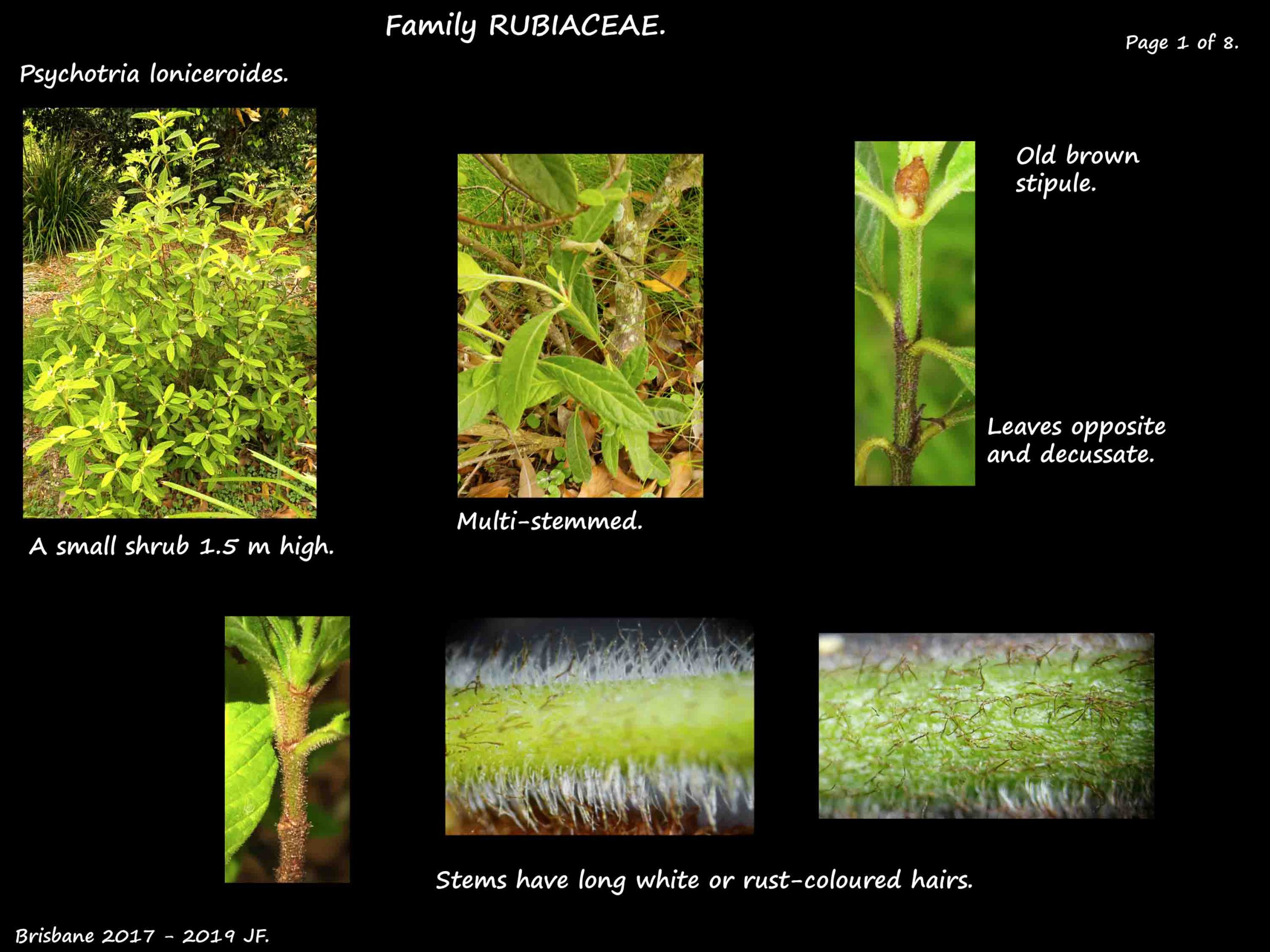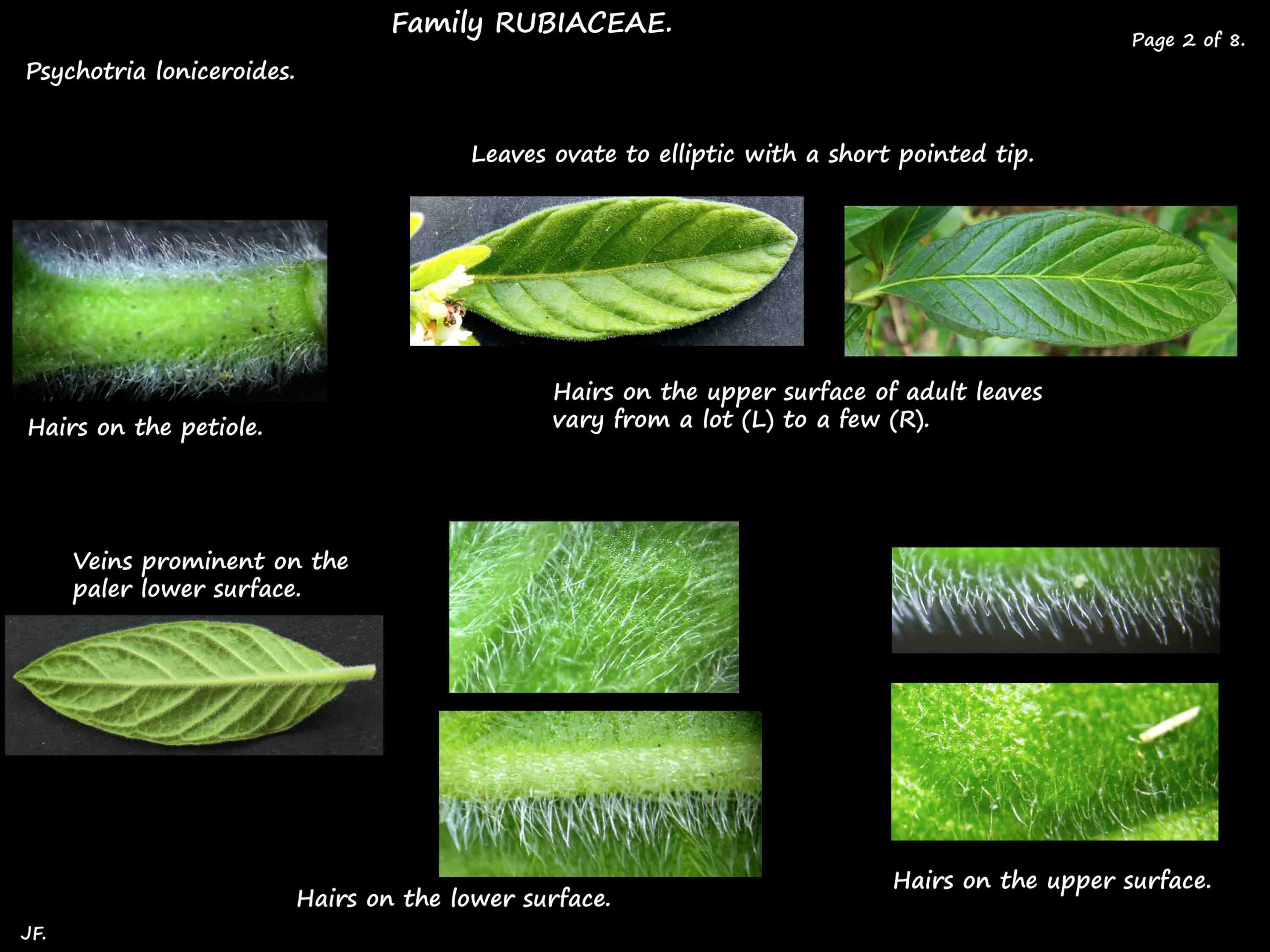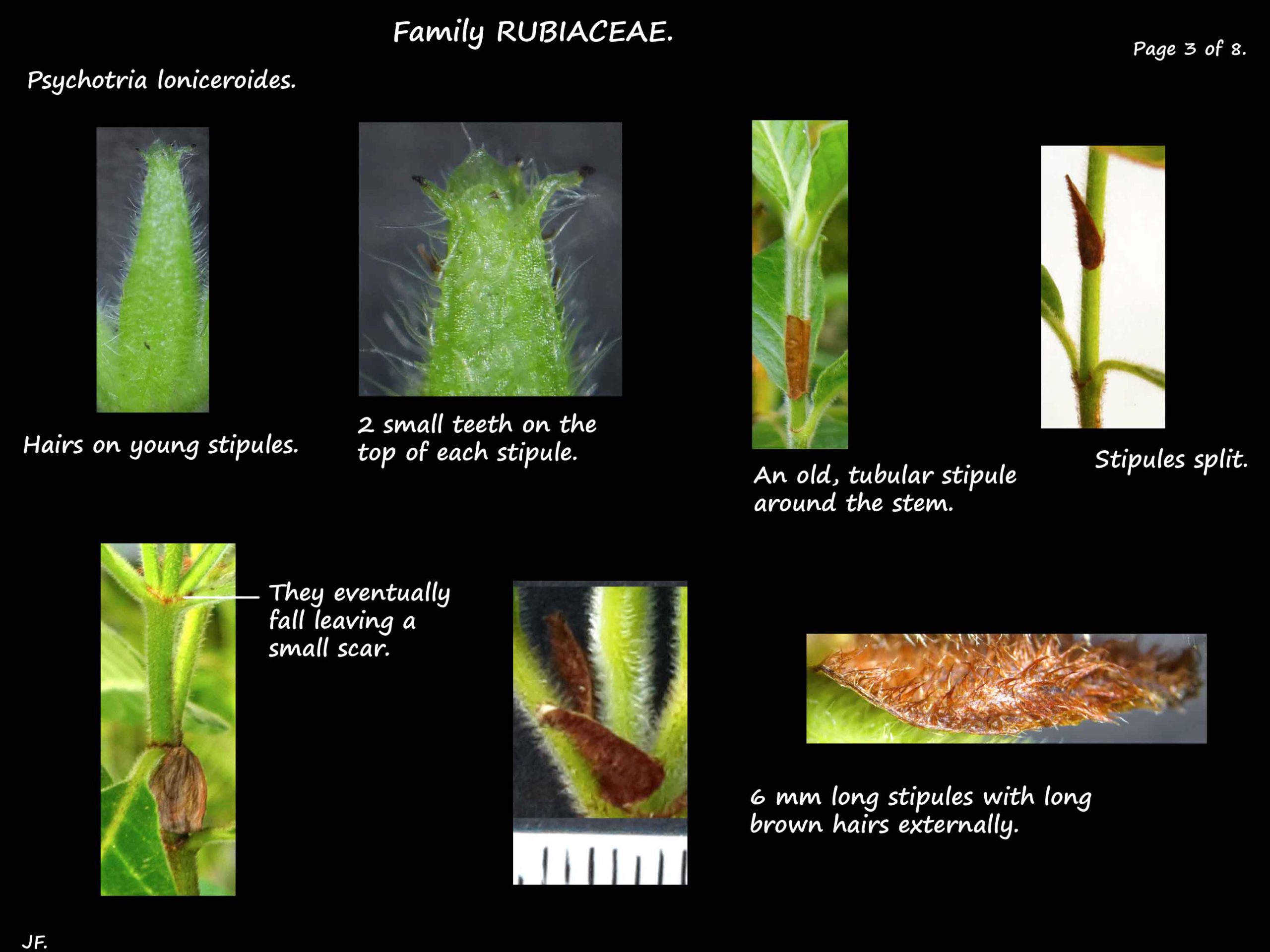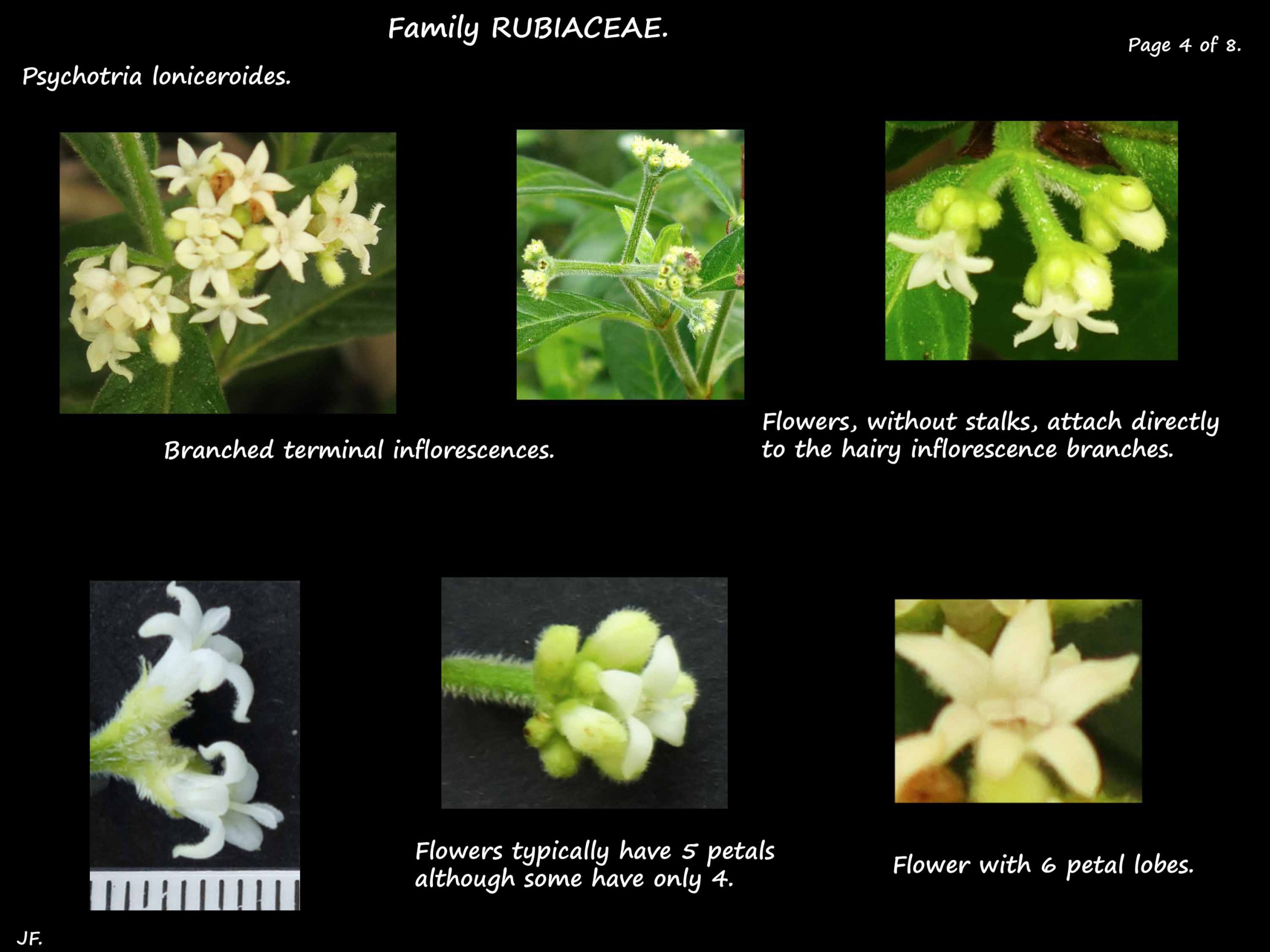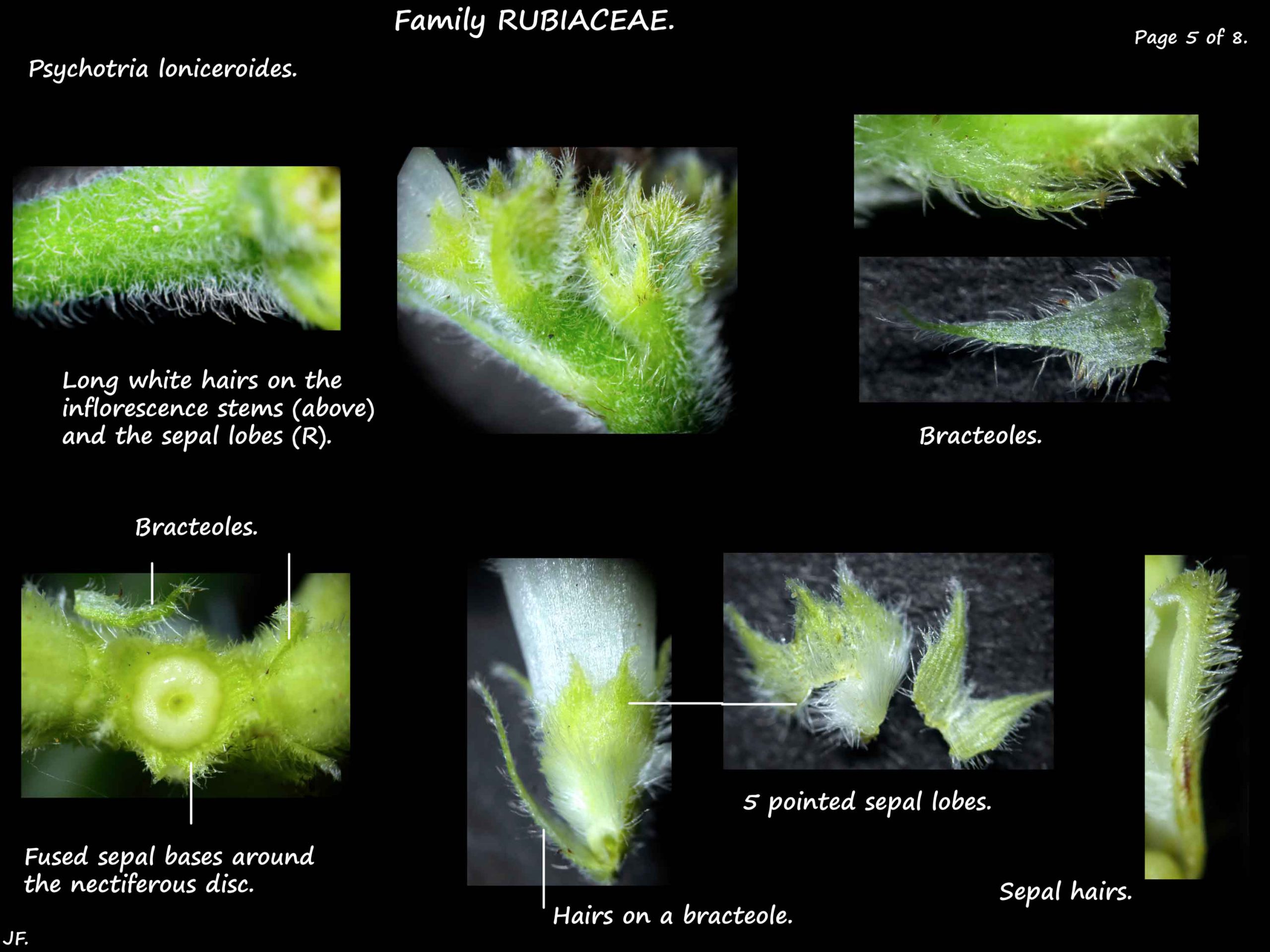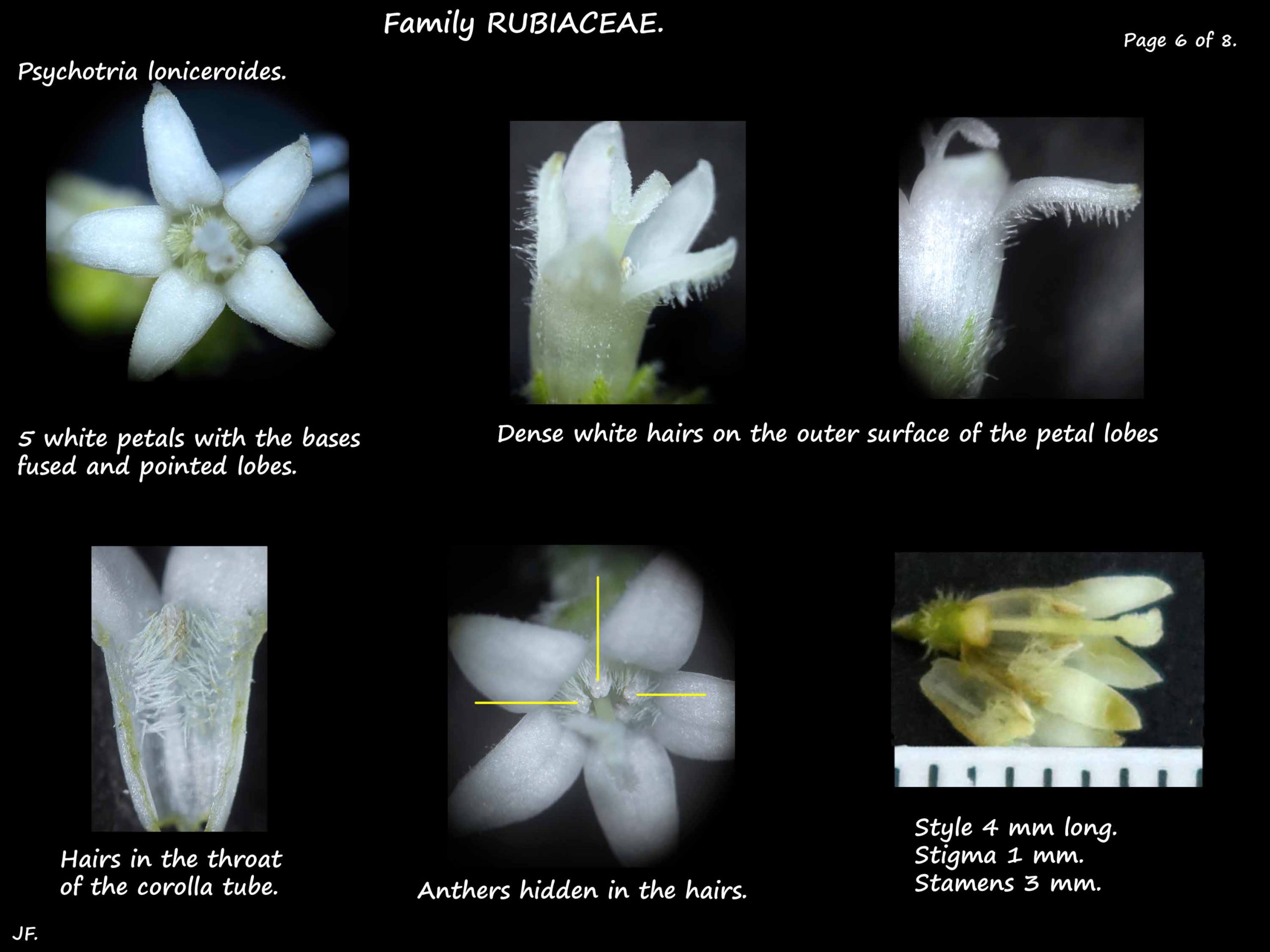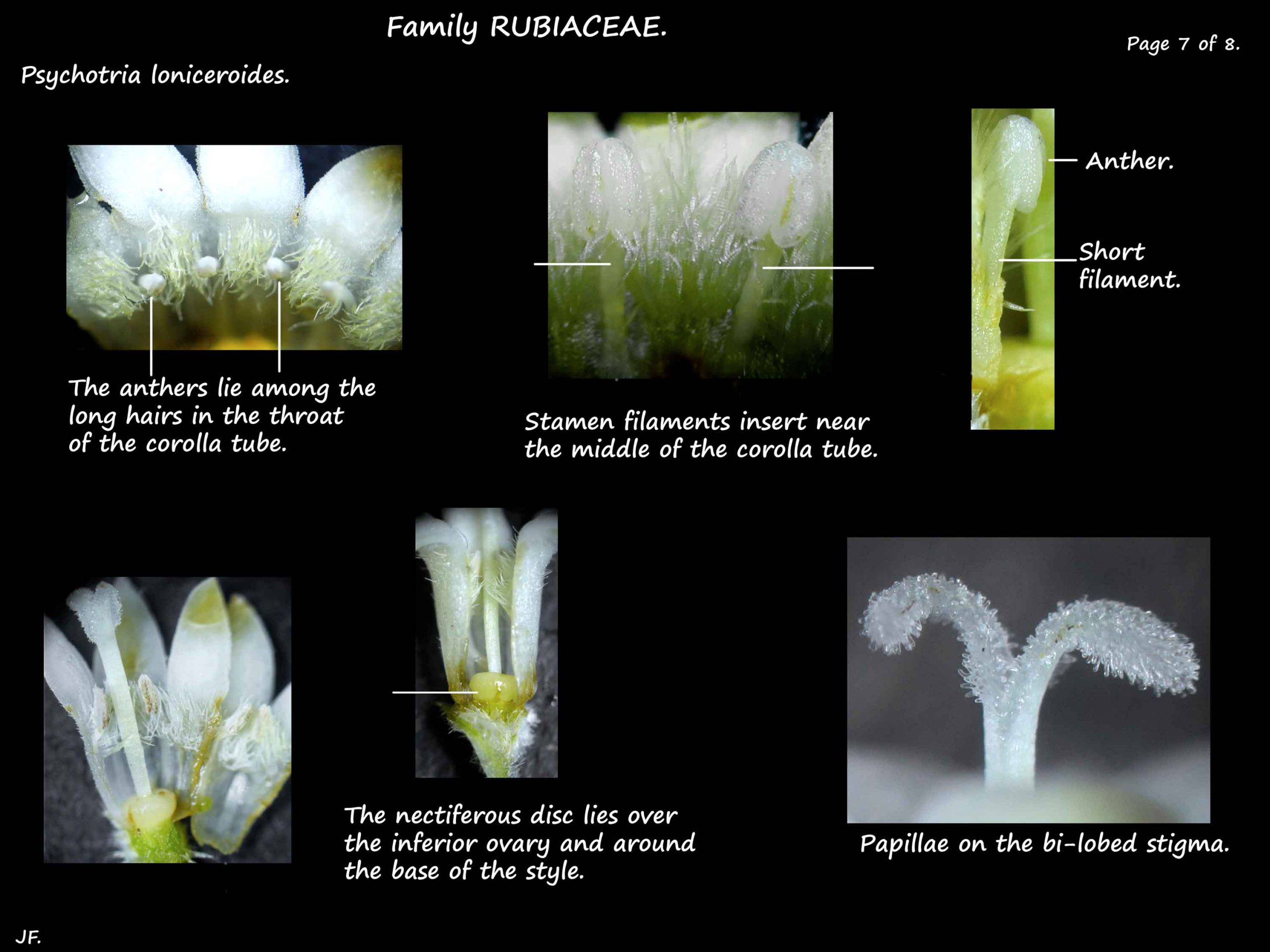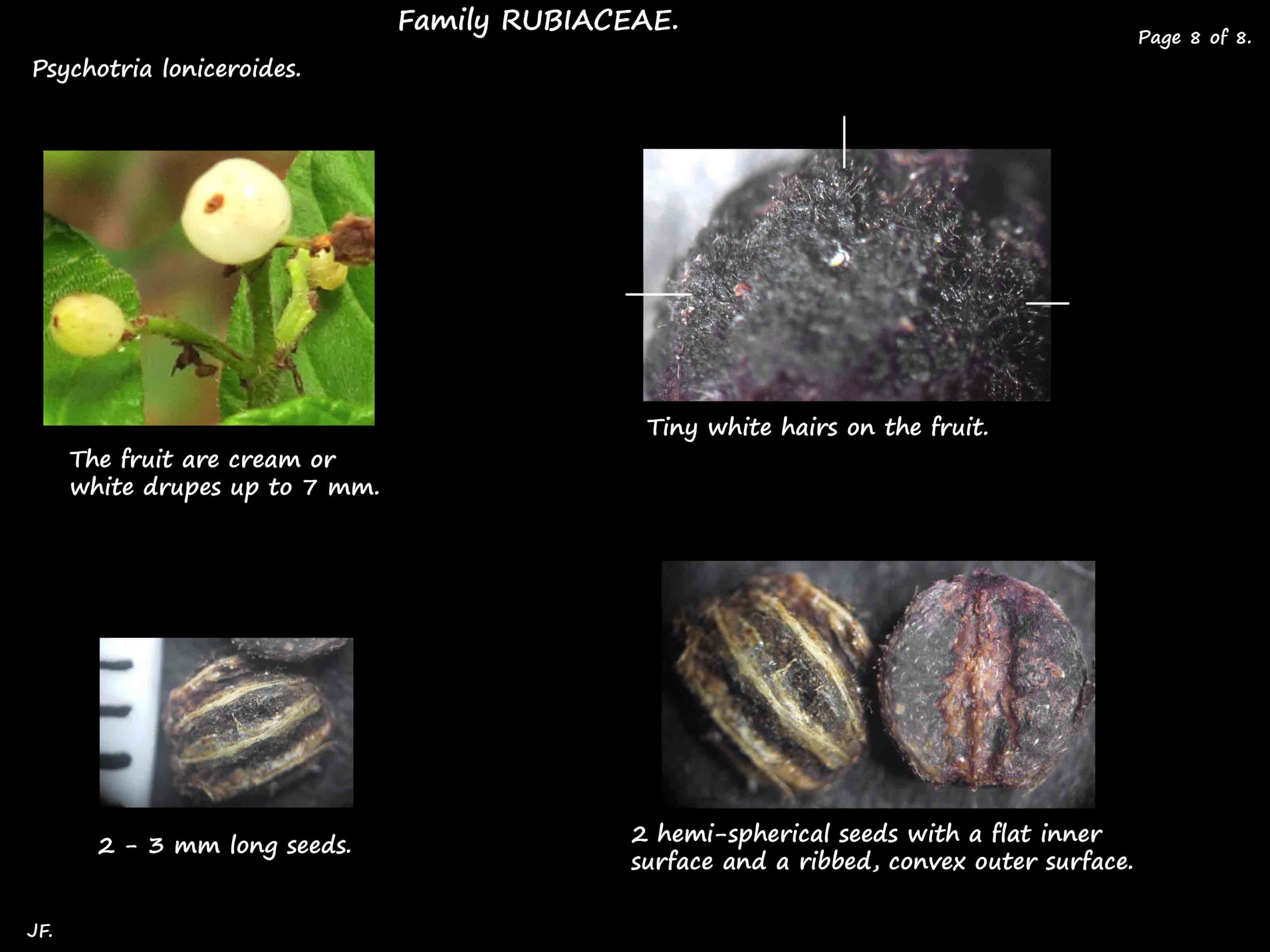Psychotria loniceroides.
Family Rubiaceae.
The Hairy Psychotria is native to eastern Australia including Queensland.
They are mostly shrubs 3 to 4 m high but can be small trees up to 6 m.
New growth, including inflorescences, has long white or rust-coloured hairs.
The leaves are opposite and on petioles up to 2 cm long.
Leaves are from 5 to 12 cm long and up to 5 cm wide.
The blades are elliptic to ovate with a short, pointed tip.
The edges may be slightly wavy or irregular.
The lateral veins are prominent on the paler lower surface.
There are hairs on both surfaces and there are often domatia on the lower surface.
Older leaves may loose some of the hairs on the upper surface.
Tubular stipules surround the twigs and protect the terminal leaf bud.
They are around 7 mm long with 2 small teeth on the upper margin.
The terminal inflorescences are branched clusters of small flowers.
The stems and inflorescence branches have dense, long, white hairs.
The small white flowers attach directly as they have no stalk or pedicel.
The calyx is around 2 mm long, half being the tube and half the 5 pointed sepal lobes.
The outer surface of the tube and lobes are densely covered in hairs.
The 3 to 4 mm long corolla tube holds 5 lobes around 3 mm long.
There are long hairs on the outer surface of the petal lobes.
There are also long hairs inside the top of the corolla tube.
The 5 stamens have anthers that lie among the hairs in the throat of the tube.
The short filamens insert in the middle of the corolla tube.
The style, around 4 mm long, extends well past the corolla tube.
The stigma is 2-lobed.
There is a nectiferous disc around the base of the style.
The fruit are ellipsoidal or globular drupes around 7 mm across.
They are white or cream with the calyx still attached at the tip.
There are short hairs on the surface.
Each holds (1) 2 seeds that are 2 to 3 mm long.
The seeds are hemi-spherical being flat on one side and convex on the other.
The outer convex surface is ribbed.
J.F.
